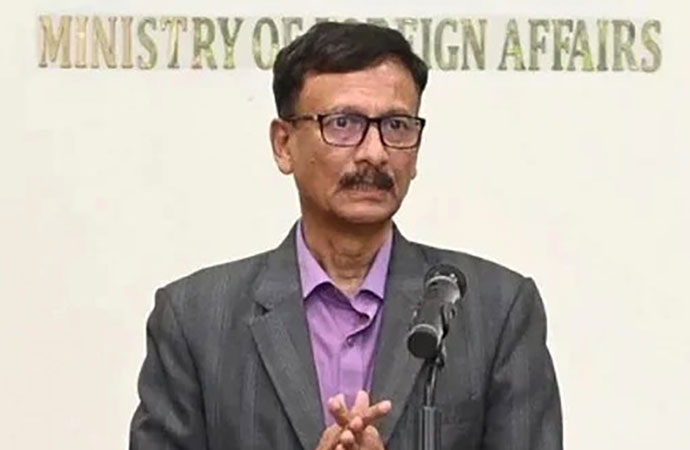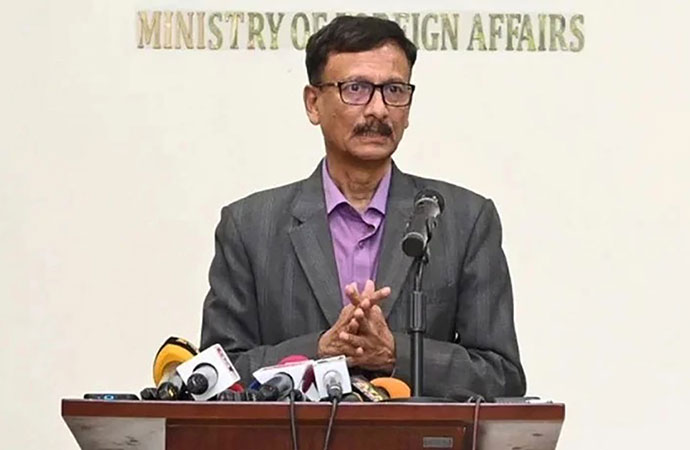Essays

Photo: Unsplash
In the burgeoning if not exploding tourism industry, 'over-tourism' is a trap. High density of tourism has afflicted certain European cities to the extent that they are now victims of their very success. Mobs of tourists characterize summer time in European cities. Iceland with a resident population of 300,000 heads; attracts some 2.3 million overnight visitors. Amsterdam has less than one million residents. In peak season, some 18 million visitors. The city is over-run by holiday-makers. Barcelona with a local population of 1.6 million opens its land-space to some 30 million visitors. The city of Prague has a population of 1.3 million. 2018 saw 7.19 million visitors; almost all concentrated in the city centre. Loads of litter plague snaking queues to the Louvre and Eiffel Tower in Paris. A human wall crowds a Lonely Planet guidebook referred to waffle outlet in central Brussels. A legendary Lisbon cafe offering the Portuguese culinary delight - the 'pasteis de nata' the Portuguese classic custard tart - involves both time and tenacity. The Uffizi galleries in Florence has seen a surge of footfall; some 4.2 million in 2018. One hundred nationalities pass through the doors each week. Well, revenues also doubled from the previous year to Euros 34 million. Social media has democratized travel. Today is the age of global Instagram 'likes' and Facebook content. Should we not see, savour the moment and then only then - strike the selfie? Social media travels fast and at a furious pace. We all follow TripAdvisor; adhering to their advice and for sure, sharing it.
We all participate in the congested parade of tourism traffic. Concentration of people evolves into the stigma of becoming main-stream. Even the introduction of the convenient and profitable Airbnb alternative to hotel and hostel accommodation has fallen victim to its popularity. The local population is hard put to locate housing, as more and more fellow locals see huge profit in offering their rooms as tourists' housing. Amsterdam is looking into banning short term rentals and Airbnb in certain areas. 'Over-tourism' is what happens to a place when an avalanche of visitors "changes the quality of life for people who actually live there" declares the Icelander Andrew Sheivachman, editor at the travel web site Skift whose 2016 report about Iceland established the term.
So competitive, volatile and fast- moving is the travel industry that the oldest travel company in the world, the venerable 178 year old Thomas Cook established in 1841 collapsed in September 2019. The British-established Thomas Cook was the pioneer of package tour business. Robert Runcie, the Archbishop of Canterbury (1921-2000) proclaimed, "I sometimes think that Thomas Cook should be numbered among the secular saints. He took travel from the privileged and gave it to the people." He is also on record with the observation that "In the middle ages people were tourists because of their religion, whereas now they are tourists because tourism is their religion." The British owned historical pioneer of the travel trade has been engaged in the globe's largest peace-time repatriation of some 150,000 British customers stranded abroad.
Some European cities in particular Amsterdam, Lisbon, Paris, Venice are adding a certain percentage charge to hotel accommodation bills to boost the city's coffers in its efforts in dealing with the hordes of humanity that descend on ritual tourist destinations during the summer sojourn. Hotels add charges of 3 to 5 percent on the room rate. Venice is pondering an 'entry charge.' There is also a national tourism move in Europe to promote other towns, cities, sites and sights; thus lessening the pressure and people in popular concentrations. Paris alone pulled in 35 million visitors in 2018. The goal is to promote others that need a tourism boost and economic influx and move away from regular circuits. France is promoting measures to attract travellers to other alluring places - often forgotten. All offering the confluence of fine food, aesthetes, atmospheric alleys, architectural heritage, local and national retail therapy and the essential enticing 'je ne sais quoi' French vibe. Proximity to other low-key attractions is the objective. There has to be Plan B.
The New York Times carried an article 'Shoulder Season' for those seeking to satisfy their wanderlust. The definition: travel before or after peak summer travel time; resulting in cheaper air fares, hotel rates and fading crowds. Yet the scenic sites and sights remain constant even in hyper-destinations. All offering a level of normalcy and slower pace following the chaotic crowds during a hectic summer. For you shall always have London Paris, Rome or Venice or anywhere else in the world that you fancy.
Sustainable tourism is the key word today. Responsible tourism is needed to combat the dense flock of tourists that puts such pressure on a city or site's sustainability. It is imperative to maintain a place's cultural complexities and way of life; the very life-line of the vitality that so attracts global visitors. The summer seasonal influx of visitors strains existing infrastructure. There is such a thing as too much of a boom for mainstream destinations. The need is for the savvy explorer to leave behind a lighter footprint. Considerable challenges remain. Climate acceleration is a contributory factor. Heat and humidity accompany the traveller as does traffic congestion. Paris intends to ban tourist buses in the city centre. Pedestrians only paths around key popular destinations; eg. the Sagrada Familia Basilica in Barcelona is a proposal. Venice may ban cruise ships from entering the lagoon. Environmental issues promote 'Going Green.' Recycling is a measure to cope with mountains of paper, plastic pollution and food packaging. Tickets for special exhibitions at top trafficked European museums have to be bought online. Efforts in crowd management include online buys and timed tickets. Only due to early purchases of tickets by a friend in London, was I able to see the monumental exhibition on the Mexican artist Frida Kahlo at the Victoria and Albert Museum. In the months that followed, all tickets were sold out.
Urgent measures to protect cherished sites from serious threats are needed. Venice is a high-profile case in point. A legacy of medieval confluence of cash, commerce, power and palaces resonates through its very air and ambience. Throngs of tourists mark the summer season in Venice. With a permanent population of some 50,000, some 30 million tourists hit the city annually. Would this not be defined as an avalanche of tourists? Water taxis that ply the Grand Canal remain too many for comfort. One report reported volunteers who clear the lagoon of it garbage-laden water. Collected litter has included tires, a bicycle, a radio and uncountable cans, glass and plastic bottles. Troublesome tourist behaviour has prompted a campaign group to point out that 'Venice is not Disneyland.' 'Behavioural regulations' have been recently introduced. For example, sitting in undesignated places ie. the steps surrounding the Piazza San Marco - as we were doing - and were asked to move. Little did we know that a $235 fine could deplete the wallet. A sign is posted: 'Do not dive off the bridges.' Recent reports record the police being called in to pick up two Czech nude swimmers in the canals of tranquility. They were fined Euros 3000. There has been a backlash following a tourist's head butt against a gondolier in Venetian canals following a selfie dispute. 'Boisterous behaviour' fines are probably in the pipeline. Early premonition: "Travel is now impossible; tourism is all we have left" declared Paul Fussell (1924-2012) the American cultural and literary historian.
Yet Venice remains a visionary vista, an ode to enduring beauty and soul. On view is the crown jewel of medieval Europe. The 'floating city' with its widespread network of winding waterways, narrow canals and epic lagoons attracts all. Gondoliers ply the lagoons in a timeless frame - the very emblem of the place. The sea-side city's breath-taking beauty offers medieval era feats of architectural and engineering masterpieces that to the naked eye remain anchored in water; while innumerable domes and towers rise from the waterways. The iconic arched Rialto Bridge built in 1591 represents architecture at its best. Every street hides a jewel of atmosphere. Artisanal shops to die for. Independent Venetian boutiques whose aesthetes simply stop you in your stride to stare at the window-dressage. Rainbow range of bright coloured buildings lining the waterways are made for photographic posterity. Piazza San Marco hosts an ecclesiastical monument of monumental splendour; the golden-mosaic filled Basilica Saint Mark whose luminousness strains the neck to travel up and further up to scan the upper rich visual roofscape. Charles Dickens in 1844 was rapturous in his take on Venice. "The gorgeous and wonderful reality of Venice is beyond the fancy of the wildest dreamer. Opium couldn't build such a place, and enchantment could shadow it in a vision."
Our hotel room was not a room with a view. Or at least not that of the Grand Canal - on which it is located. The salmon-coloured exterior Gabrielli Hotel - a family affair since 1856 - offered us a spectacular cityscape scenario of red shingle-roofed terracotta tiled roof-tops glistening golden in the dipping sunlight. To add to this glorious canvas were floral boxes of flaming red, bursting pink and purple blooms edging rooftop balconies. A panorama of earthy tones and floral prints. Located in a Venetian palazzo, the Gabrielli Hotel dates from the fourteenth century. A roof-top terrace overlooks the vision that is Venice. On offer, history lessons with views. One of life's keenest pleasures opinioned W.H. Davies, the Welsh poet (1871-1940) is the following: 'What is this life if, full of care. We have no time to stand and stare...'.
Next morning, multi-course breakfast had us over-indulge under ivory-coloured awnings overlooking the Grand Canal. And then in quick succession came boat-loads of tourists disembarking at the marina across the promenade from us. A rude-awakening of a setting. Almost without fail, each and every member reaching land; documenting the moment with a selfie-stick. This was vivid manifestation of 'over-tourism.' And yet. And yet. A French photographer Thibaud Poirier has put out an Instagram camera lens series 'Sleeping in Venice.' These visuals capture a city frozen in night-time. Under a dark back-drop, multi-hued three-four storied buildings hug empty shimmering moon-lit canals and bridges. For night-owls, this is the Venetian Vision.
I had taken note in August 2018 of an exhibition 'Syria before the Deluge' at the Venice Biennale 2018 taking place at the Palazzo Mora. Time did not permit a visit. However in the near future, one may come across an exhibition titled 'Venice before and after the Deluge.' The 'City of Canals' is sinking. Frequent flooding, an average of a hundred times a year plagues the city. Less than three months following our visit, three-fourths of the city was under-water. The worst floods in a decade. The celebrated Piazza San Marco a lake. 'La Serenissimo,' (Most Serene) may simply disappear in time. The tourist cluster load on Venetian bridges while viewing slender gondolas while capturing the scenario on selfies is not serene at best. For sure, Venice must have sunk a further few millimetres with the weight of the pair of us; notwithstanding the rest of the tourist traffic jam. To reiterate the words of Simon Mayle in 'The Burial Brothers (1996), "There's an old saying that goes something like, "when the going gets tough, the tough go on holiday."
Come November 2019, 'Serenissimo' was submerged under the worst flooding since 1966. Eighty percent of Venice under water. Its architectural marvels threatened first by record high tides inundating its priceless interiors and then impacted by receding waters that leave behind salt-crust residue and lingering dampness. Structural damage, soaked columns, walls, mosaics, artwork are all immediate evidence of this historic flooding. Screened images remain beyond belief. The Governor of the Veneto region, has termed the scenario 'apocalyptic devastation.' While Piazza San Marco was under a metre of water, the Basilica San Marco was flooded for the sixth time in 1200 years - the fourth time in the past two decades alone. 'Aqua alta' or high waters have swept through some of the world's most iconic edifices resulting in the temporary closing of the Venice Biennale 2019; which was scheduled to end on 24th November. We are witness to 'Venice During the Deluge.' Water, water everywhere has brought Venice to its knees. Can one deny the impact of climate change? Is Venice vanishing? The 'Pride of Italy' is certainly battling for its survival - its very soul endangered.
The following lines written by Michael Crichton in 'Travels' (1988) echo in my thoughts. "If you're a writer, the assimilation of important experiences almost obliges you to write about them. Writing is how you make the experience your own, how you explore what it means to you, how you come to possess it, and ultimately to release it."
Raana Haider is a travel writer.

























Leave a Comment
Recent Posts
Remembering Kalidas Karmakar ( ...
The art world remembers Kalidas Karmakar, a visionary whose creativity ...
An Evening with Shishir Bhatta ...
Cosmos Art Echo, the artist talk initiative of Gallery Cosmos and Cosm ...
Myanmar denies genocide, calls Rohingya crackdown co ..
Yes, of course
Earth’s average temperature last year hovered among ..
Bangladesh and Singapore: A Tale of Two Nations